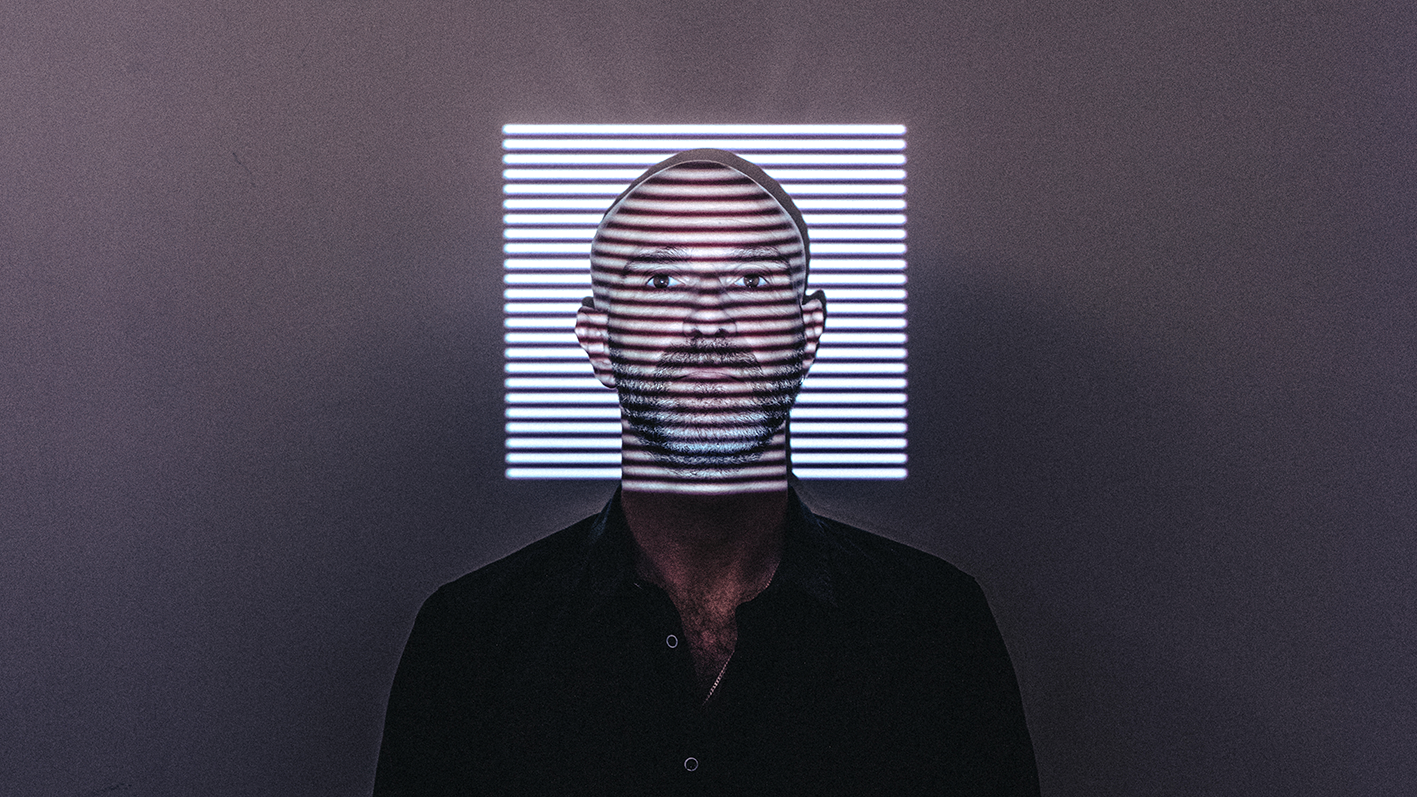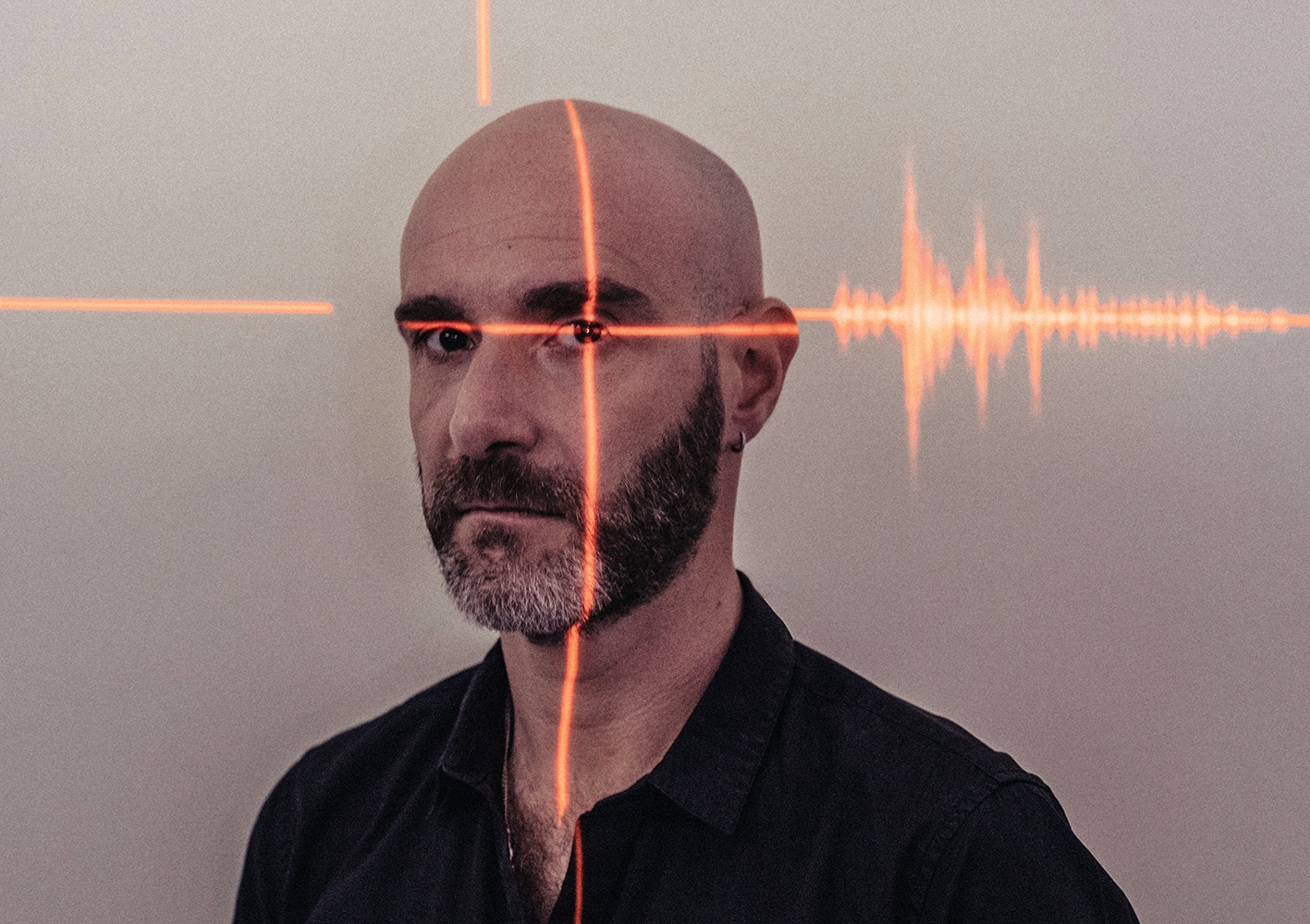Vitalic: "The basic concept of the album is to make a bridge between contemporary techno and post-punk"
Ahead of the release of his first album since 2017, French producer Vitalic talks through the studio equipment he's using to create punk-influenced electro

French producer and multi-instrumentalist Vitalic recently celebrated his 20th year in electronic music, and with that, his first album release since 2017.
The new record, Dissidænce, is a two-part affair, and the first volume promises more of the mutant techno with which he made his name. This time around, though, the producer is imbuing his 4/4 constructions with a post-punk edge.
Vitalic joined us to talk through studio essentials and how the new release represents a return to his queer roots and sonic identity.

Tell us about how you first got involved with music production.
“Since I was a kid I would listen to electronic music, and I had the fantasy that one day I could get synths and write some music myself. At that time machines were expensive and it seemed almost impossible to achieve that from my small town.
"I finally bought my first synth without knowing how to use it or where it would lead me in 1995, with money from a summer job. From then on I built up a studio little by little.”
What’s your current studio set-up looking like?
Get the MusicRadar Newsletter
Want all the hottest music and gear news, reviews, deals, features and more, direct to your inbox? Sign up here.
“My studio is a room painted in black under my flat in Paris. It’s made up with a large screen, and some analog and digital synthesisers. It’s not too big but I feel very comfortable there.”
I use Ableton Live both for the music and the stage lights - it is the brain of everything
What DAW (or DAWs) do you use, and why?
“I use Ableton. I tried other solutions but it’s my favourite so far. I use Ableton Live both for the music and the stage lights - it is the brain of everything.
What one piece of gear in your studio could you not do without?
“At the moment my favourite piece of equipment is the DSI Pro 3, it sounds both tight and warm. I used it a lot on the new LP.”
Tell us about the new album track, “Carbonized”. What were the inspirations behind this one?
“The track is about a toxic girl that would destroy anything she touches, i.e. anybody she meets. We all know someone like that. The music is a mix between techno and post-punk songs, a kind of electro-punk.”
The press release surrounding the record states that the album sees you going back to your “queer roots and sonic identity” - could you elaborate on that at all?
“I think it refers to the fact I am getting back to punk stuff. I experimented a lot of things through the years, including ravey techno and disco.
Usually I don’t use too many machines for each LP, in order to have some sonic colour on the record
"After I did Kompromat with Rebeka Warrior two years ago, which was post-punk, I had the feeling I wanted to set disco aside for some time, and get back to darker and harsher music with a techno twist.”
How do you feel “Carbonized” differs from your previous work? Are you trying something new here or building on what you’ve done before?
“‘Carbonized’ reminds me of "My Friend Dario" - that was on my first LP. Nevertheless I took another direction. I love bands like Crash Course in Science or Daniel Miller, who were very experimental in their time. The basic concept of the album is to make a bridge between contemporary techno and post-punk.”
Was there one or two pieces of studio equipment that were essential to the making of this record?
“Together with the Pro 3, I used my GRP A4, which is an Italian synthesiser that sounds very lush and its sequencer is a lot of fun.
I like the crusty-mellow bass from the Pro 3, that sounds almost alive
"I also used the Moog One for melodic leads and large pads. Usually I don’t use too many machines for each LP, in order to have some sonic colour on the record.”
What’s your favourite track off the new record, and why?
“I think that my favourite song on DISSIDÆNCE Episode 1 is “Danse avec Moi”. I like the crusty-mellow bass from the Pro 3, that sounds almost alive. Also I like the lyrics in French talking about falling in love on the dance floor. Finally, the effect on the voice is very kinky.”
Do you have plans to tour this album? Tell us about your live set-up.
“I will start the tour in January, and I’m hoping it won’t be postponed. I don’t know yet which machine I will use. I like the Novation Peak which I used a lot on my previous tour because it can make anything, from basses to lead sounds.
"Maybe I’ll try the Hydra from ASM. I should also take the pieces of equipment I’ve designed myself with Tom, a German engineer, like the KOCMOC, which is the brain of the live setup.”
Did you collaborate with anyone on this record? If not, why not?
“Yes, I wrote a song with Kiddy Smile, “Rave Against the System”. But I did no other collabs for this LP. Basically, I did everything myself and I will do no remixes.”
People like Bicep and Burial push the boundaries
There’s a real range of styles present on your latest album. Do you see yourself as an artist working in any particular genre, or do you not pay attention to these kinds of categories?
“I wouldn’t say there is a large range of styles… but there is a large range of moods instead. I cannot make an LP with 12 or 15 similar songs. It takes a year to make an album and I go through different feelings, and you can find that in the music.”
What have you been listening to over the past year - who do you feel is pushing the boundaries at the moment in terms of new artists?
“Over the past years I have been rediscovering ‘90s techno and acid. Bending genders, with a lot of fun and creativity. People like Bicep and Burial push the boundaries.”
Vitalic's new album, Dissidænce Vol. 1, is out in October via Clivage Music.



I'm MusicRadar's Tech Editor, working across everything from product news and gear-focused features to artist interviews and tech tutorials. I love electronic music and I'm perpetually fascinated by the tools we use to make it. When I'm not behind my laptop keyboard, you'll probably find me behind a MIDI keyboard, carefully crafting the beginnings of another project that I'll ultimately abandon to the creative graveyard that is my overstuffed hard drive.
"At first the tension was unbelievable. Johnny was really cold, Dee Dee was OK but Joey was a sweetheart": The story of the Ramones' recording of Baby I Love You
"Reggae is more freeform than the blues. But more important, reggae is for everyone": Bob Marley and the Wailers' Catch a Fire, track-by-track









